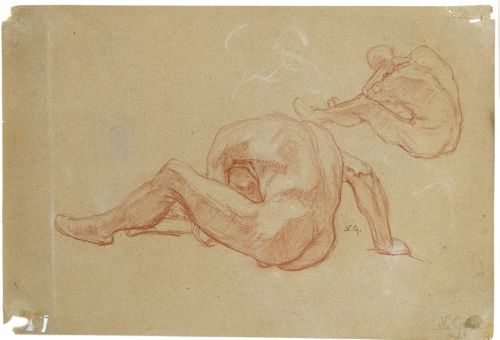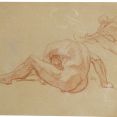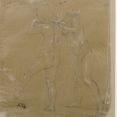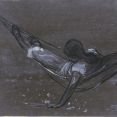The exhibition of Nikolaos Gyzis' drawings from the collection of the Municipal Gallery – donated by the Gyzis family - comes to fill in aspects of the work and personality of one of the most important Greek painters. In combination with the permanent exhibition of the artist's works at the same venue, this collection focuses on the wealth of themes, the soundness of the artist's technique, and the rare character of his expressiveness. Drawings, sketches and notes, the works before and within the works of a great artist. An exhibition, curated by art historian Konstantinos Didaskalou, that will certainly enchant you.
Dominant form of the 'Munich School', Nikolaos Gyzis (Sklavochori, Tinos, 1842 – Munich 1900) affected the course of Greek art with his painting, while he holds a respected position in German 19th century art. In his genre paintings he managed to transcend mere narration, while his calibre can be seen in his idealistic, allegorical and religious work, all areas in which he was in step with the quests of the avant-garde Jugendstil movement.
He spent his early childhood on the island of Tinos and in 1850 they settled with his father in Athens. Due to his young age he attended Polytechnic school lectures as an audience member. He officially enrolled in 1854 and studied until 1864, while he then continued his studies at the Royal Academy of Fine Arts in Munich.
Two of his major “German” works, 'The Liberal Arts and the Spirits of Artistic Industry' (that decorated the ceiling of the Museum of Decorative Arts in Kaiserslautern) and 'Triumph of Bavaria' (which decorated the auditorium of the Museum of Decorative Arts of Nuremberg), were destroyed during WWII. In 1888 he became an ordinary professor at the Academy of Fine Arts, Munich.
Some of his most well known works are 'Children Engagement' (1875) and 'The Secret School' (1885). A deeply religious individual, he later turned to allegorical and supernatural depictions. His so-called “religious” pieces – the most characteristic being 'Behold the Celestial Bridegroom Cometh' (1895-1900) – intimate his existential angst. The dominant theme of his mature work was the struggle against Evil and the eventual victory of Good. The most important form in all these works was Woman, who at times appeared as Art, at others as Music, sometimes as Spring, or Glory, etc. Gyzis also designed posters and illustrated books.
Opening: 20:00 Opening hours: Tuesday to Friday, 10:00-17:00, Thursday 10:00-20:00 Saturday, 11:00-17:00, Sunday and Monday, closed
Co-organised with the Administration of Libraries & Museums, Department of the Municipal Gallery





















































































